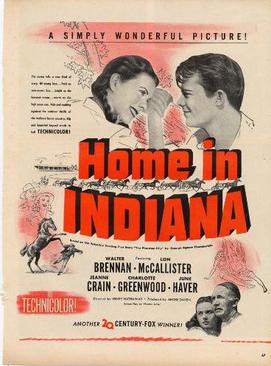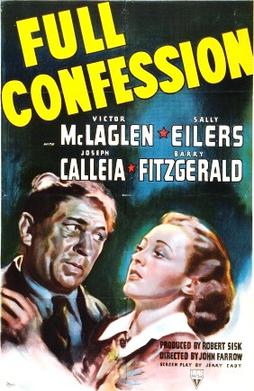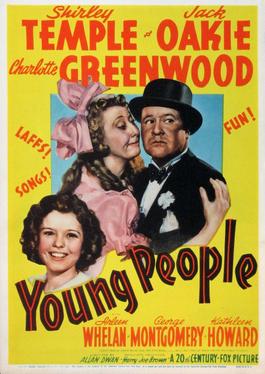
William Joseph Shields, known professionally as Barry Fitzgerald, was an Irish stage, film and television actor. In a career spanning almost forty years, he appeared in such notable films as Bringing Up Baby (1938), The Long Voyage Home (1940), How Green Was My Valley (1941), The Sea Wolf (1941), Going My Way (1944), None but the Lonely Heart (1944) and The Quiet Man (1952). For Going My Way, he won the Academy Award for Best Supporting Actor and was simultaneously nominated for the Academy Award for Best Actor. He was the older brother of Irish actor Arthur Shields. In 2020, he was listed at number 11 on The Irish Times list of Ireland's greatest film actors.

Seabiscuit was a champion thoroughbred racehorse in the United States who became the top money-winning racehorse up to the 1940s. He beat the 1937 Triple Crown winner, War Admiral, by four lengths in a two-horse special at Pimlico and was voted American Horse of the Year for 1938.

Seabiscuit is a 2003 American sports film co-produced, written and directed by Gary Ross and based on the best-selling 1999 non-fiction book Seabiscuit: An American Legend by Laura Hillenbrand. The film is loosely based on the life and racing career of Seabiscuit, an undersized and overlooked Thoroughbred race horse, whose unexpected successes made him a hugely popular media sensation in the United States during the Great Depression. At the 76th Academy Awards, Seabiscuit received seven nominations, including Best Picture, but ultimately lost all seven, including six to The Lord of the Rings: The Return of the King.

John M. "Red" Pollard was a Canadian horse racing jockey. A founding member of the Jockeys' Guild in 1940, Pollard rode at racetracks in the United States and is best known for riding Seabiscuit.

Jeffrey Lynn was an American stage-screen actor and film producer who worked primarily through the Golden Age of Hollywood establishing himself as one of the premier talents of his time. Throughout his acting career, both on stage and in film, he was typecast as "the attractive, reliable love interest of the heroine," or "the tall, stalwart hero."

Ann Marie Blyth is an American retired actress and singer. For her performance as Veda in the 1945 Michael Curtiz film Mildred Pierce, Blyth was nominated for an Academy Award for Best Supporting Actress. She is one of the last surviving stars from the Golden Age of Hollywood cinema, and became the earliest living acting Academy Award nominee upon the death of Angela Lansbury in 2022.

Herbert Alonzo "Lon" McCallister Jr. was an American actor. According to one obituary, he was best known for "playing gentle, boyish young men from the country." Another said he "had an ingenuous appeal that made him a favourite of family audiences, and was particularly at home in outdoor settings featuring dogs and horses. Ultimately his perennial boyishness and slight stature became a handicap for more mature roles."

John George Agar Jr. was an American film and television actor. He is best known for starring alongside John Wayne in the films Sands of Iwo Jima, Fort Apache, and She Wore a Yellow Ribbon. In his later career he was the star of B movies, such as Tarantula!, The Mole People, The Brain from Planet Arous, Revenge of the Creature, Flesh and the Spur and Hand of Death. He was the first husband of Shirley Temple.
Seabiscuit was a champion Thoroughbred racehorse in the United States.

David Butler was an American actor, film director, film producer, screenwriter, and television director.
Charles Schnee was an American screenwriter and film producer. He wrote the scripts for the Westerns Red River (1948) and The Furies (1950), the social melodrama They Live by Night (1949), and the cynical Hollywood saga The Bad and the Beautiful (1952), for which he won an Academy Award.

The film appearances of movie actor Errol Flynn (1909–1959) are listed here, including his short films and one unfinished feature.

Home in Indiana is a 1944 Technicolor film directed by Henry Hathaway. The film, starring Walter Brennan, Lon McCallister, Jeanne Crain, June Haver and Charlotte Greenwood, is based on the novel The Phantom Filly by George Agnew Chamberlain (1879–1966). The film was remade in 1957 as April Love.

Donald Hugh MacBride was an American character actor on stage, in films, and on television who launched his career as a teenage singer in vaudeville and went on to be an actor in New York.

Full Confession is a 1939 United States proto film-noir, crime drama film made by RKO Radio Pictures. It was directed by John Farrow from an adaptation by Jerome Cady of Leo Birinski's story. The film stars Victor McLaglen, Sally Eilers, Barry Fitzgerald and Joseph Calleia.
Michael E. "Buster" Millerick was an American Hall of Fame racehorse trainer.

Young People is a 1940 American musical drama film directed by Allan Dwan and starring Shirley Temple and Jack Oakie. This would be Shirley's final film as a child actress.
Sea Sovereign was an American Thoroughbred stallion racehorse foaled in 1942, sired by 1930s winner Seabiscuit, for owner Charles Howard. Although Sea Sovereign achieved moderate success as a racehorse, he is most famous for being part of the line sired by Seabiscuit. The fine lines of Sea Sovereign's posture, along with his light-bay coloring, resulted in the horse appearing in the 1949 Shirley Temple film to portray his sire, The Story of Seabiscuit.
Earl Felton (1909–1972) was an American screenwriter.

Sixteen Fathoms Deep is a 1948 American adventure film directed by Irving Allen and starring Lloyd Bridges, Lon Chaney Jr. and Arthur Lake. It was a remake of the 1934 film of the same title in which Chaney had also starred.














